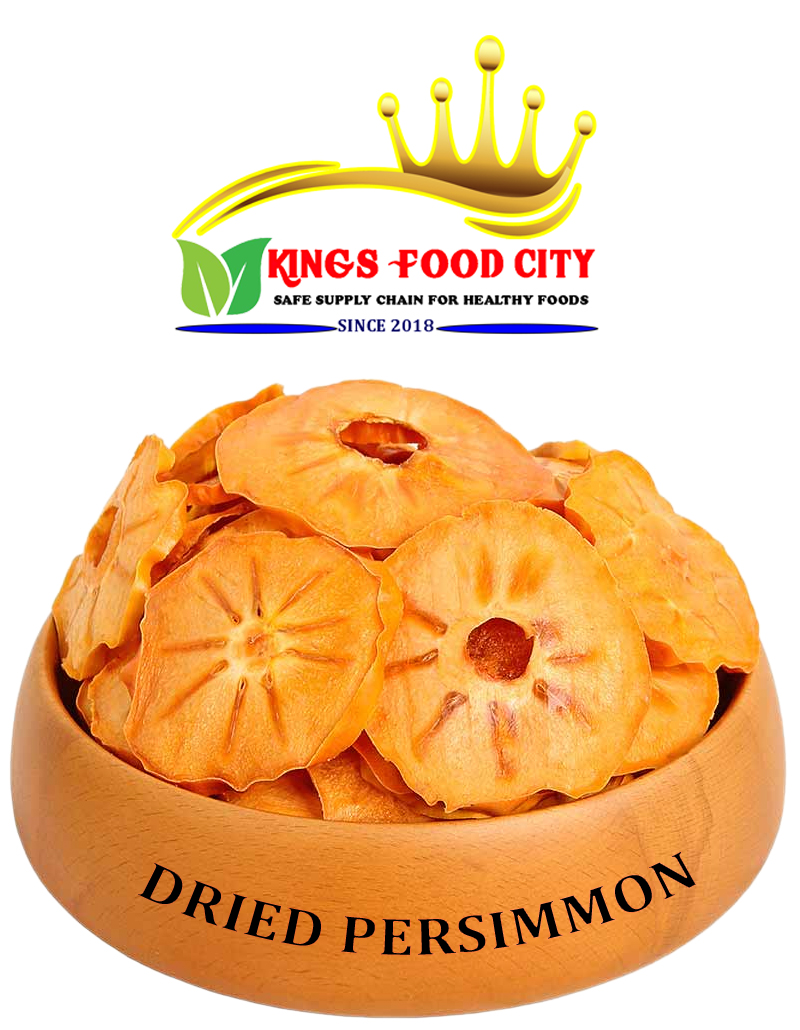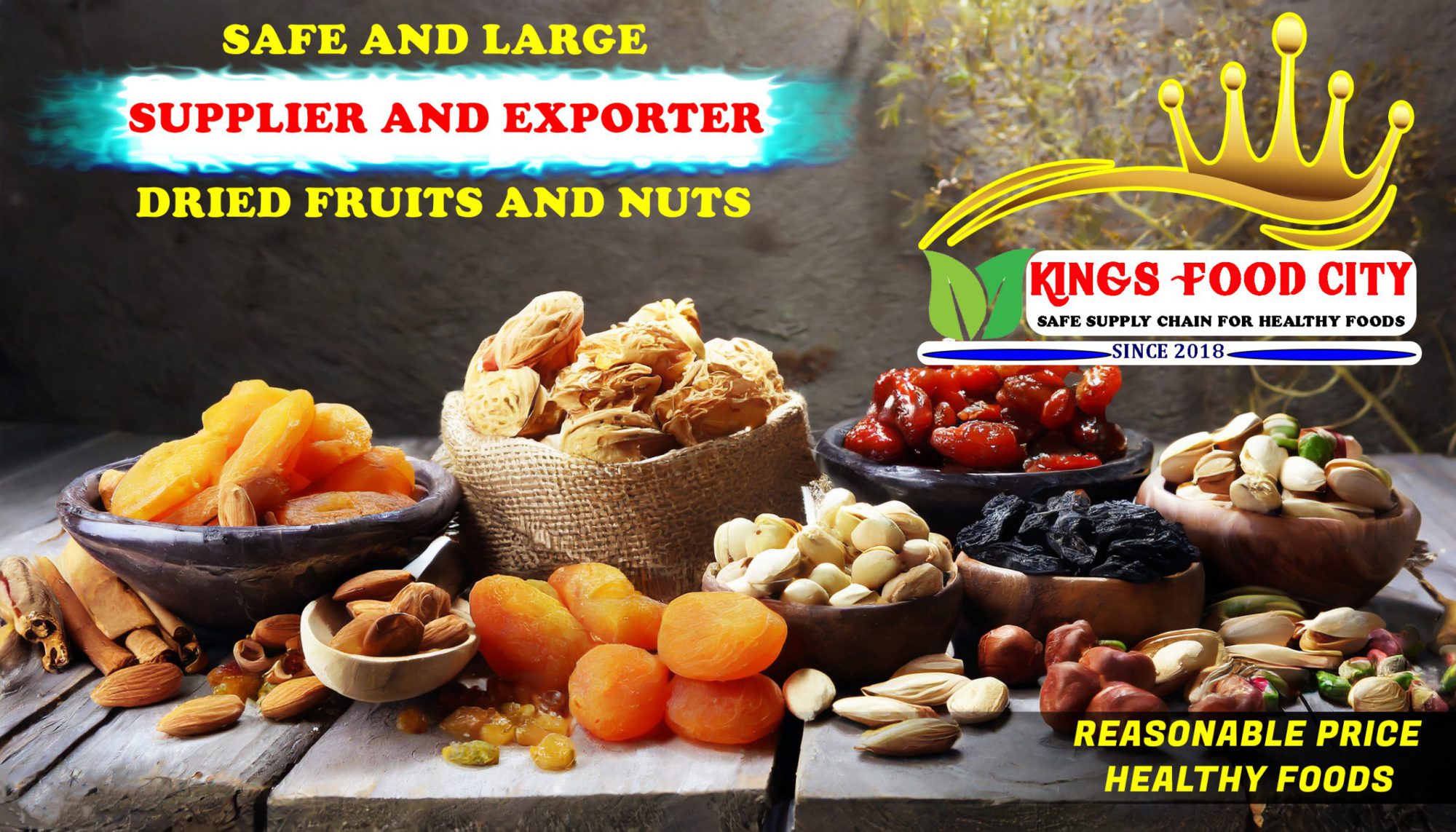Dried Persimmon
Persimmon is a fruit that comes from the persimmon tree, which belongs to the Ebenaceae family. It is native to China, Japan, Korea, and other parts of East Asia but is also cultivated in various other countries around the world. Persimmons are usually orange-red or yellow-orange in color and have a slightly sweet and tangy taste. They are known for their soft, pulpy texture and are often eaten fresh or used in various culinary applications, such as desserts, salads, and jams.
Dried persimmons, on the other hand, are made by drying the fruit. This process removes most of the moisture content, resulting in a preserved, chewy texture. Dried persimmons are commonly consumed as a snack and can also be used in baking or cooking.
Dried persimmons offer a delightful combination of a sugary-sweet taste and a chewy, sticky texture, making them a great choice for various appetizers, desserts, and snacks. These preserved fruits can be sliced into bite-sized pieces and enjoyed as is, or they can be presented on appetizer plates, cheeseboards, or served alongside afternoon tea. For more culinary versatility, dried persimmons can be chopped and added to salads, sauces, and purees. They can also be flattened and rolled with nuts for a crunchy filling, finely chopped and mixed into biscotti and scones, or incorporated into other desserts. In Korea, dried persimmons are often filled with pine nuts and served alongside sweet confections like suksil-gwa. They are also simmered to make sujonggwa, a traditional ginger-cinnamon punch served during holidays. In Japan, there is another type of dried persimmon called anpo-gaki or half-dried persimmon. These fruits are dried for a shorter period and then sprayed with sulfur to achieve a soft, juicy, and sticky jam-like texture. Anpo-gaki is typically served in small tea sandwiches with soymilk cream and is even used to flavor tiramisu. Beyond their culinary uses, dried persimmons are widely utilized in Asia to make wine and tea. They complement the flavors of various nuts such as walnuts, almonds, and pistachios, as well as spices like ginger, nutmeg, cinnamon, and allspice. Other ideal pairings include honey, caramel, maple syrup, vanilla, and fruits such as pears, oranges, pomegranates, and apples. To store whole dried persimmons, it is recommended to keep them in a sealed container at room temperature in a cool and dark place, where they will remain fresh for 6 to 12 months. Alternatively, they can be tightly wrapped in plastic wrap and stored in the freezer for 12 to 18 months.
Dried persimmons are enriched with phytonutrients, flavonoid antioxidants, and polyphenols, including catechins, gallocatechin, and the significant anti-tumor compound known as betulinic acid. They have a high fiber content and can help relieve constipation by promoting the movement of digested food through the intestines in a beneficial way. Dried persimmons are a great, energizing food because they are rich in fructose, which is easily absorbed by the body's cells. They can be enjoyed for breakfast or after a workout, especially when blood sugar and insulin levels are low. Dried persimmons are packed with a significant quantity of Vitamin A, which plays a crucial role in maintaining good eyesight, a healthy immune system, and supporting cell renewal and growth within the body. Dried persimmons provide a rich dose of Vitamin C, which boosts the immune system, guarding against harmful microorganisms. Additionally, it supports the formation of collagen, speeding up the healing of wounds, and helps prevent the buildup of cholesterol and other substances around the arteries by supporting fat metabolism.
Dried persimmons, on the other hand, are made by drying the fruit. This process removes most of the moisture content, resulting in a preserved, chewy texture. Dried persimmons are commonly consumed as a snack and can also be used in baking or cooking.
Dried persimmons offer a delightful combination of a sugary-sweet taste and a chewy, sticky texture, making them a great choice for various appetizers, desserts, and snacks. These preserved fruits can be sliced into bite-sized pieces and enjoyed as is, or they can be presented on appetizer plates, cheeseboards, or served alongside afternoon tea. For more culinary versatility, dried persimmons can be chopped and added to salads, sauces, and purees. They can also be flattened and rolled with nuts for a crunchy filling, finely chopped and mixed into biscotti and scones, or incorporated into other desserts. In Korea, dried persimmons are often filled with pine nuts and served alongside sweet confections like suksil-gwa. They are also simmered to make sujonggwa, a traditional ginger-cinnamon punch served during holidays. In Japan, there is another type of dried persimmon called anpo-gaki or half-dried persimmon. These fruits are dried for a shorter period and then sprayed with sulfur to achieve a soft, juicy, and sticky jam-like texture. Anpo-gaki is typically served in small tea sandwiches with soymilk cream and is even used to flavor tiramisu. Beyond their culinary uses, dried persimmons are widely utilized in Asia to make wine and tea. They complement the flavors of various nuts such as walnuts, almonds, and pistachios, as well as spices like ginger, nutmeg, cinnamon, and allspice. Other ideal pairings include honey, caramel, maple syrup, vanilla, and fruits such as pears, oranges, pomegranates, and apples. To store whole dried persimmons, it is recommended to keep them in a sealed container at room temperature in a cool and dark place, where they will remain fresh for 6 to 12 months. Alternatively, they can be tightly wrapped in plastic wrap and stored in the freezer for 12 to 18 months.
Dried persimmons are enriched with phytonutrients, flavonoid antioxidants, and polyphenols, including catechins, gallocatechin, and the significant anti-tumor compound known as betulinic acid. They have a high fiber content and can help relieve constipation by promoting the movement of digested food through the intestines in a beneficial way. Dried persimmons are a great, energizing food because they are rich in fructose, which is easily absorbed by the body's cells. They can be enjoyed for breakfast or after a workout, especially when blood sugar and insulin levels are low. Dried persimmons are packed with a significant quantity of Vitamin A, which plays a crucial role in maintaining good eyesight, a healthy immune system, and supporting cell renewal and growth within the body. Dried persimmons provide a rich dose of Vitamin C, which boosts the immune system, guarding against harmful microorganisms. Additionally, it supports the formation of collagen, speeding up the healing of wounds, and helps prevent the buildup of cholesterol and other substances around the arteries by supporting fat metabolism.



